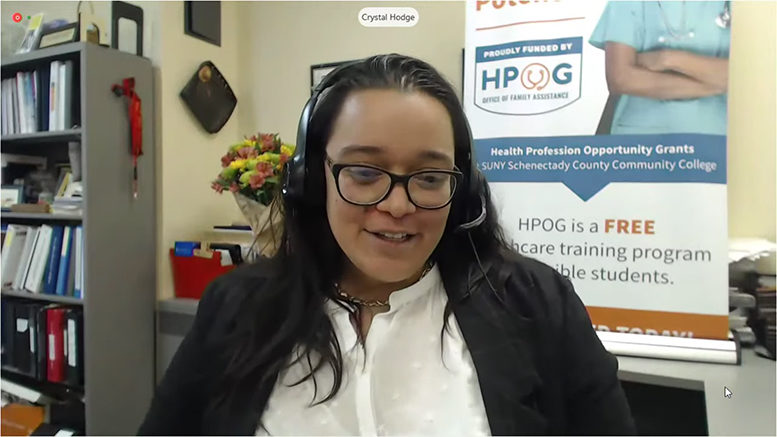A pilot program that trains low-income individuals to attain entry-level healthcare jobs that hopefully lead to more education and better-paying positions is getting a closer look by Congress.
The Worker and Family Support Subcommittee, which is part of the powerful House Ways and Means Committee, last week held a hearing to examine the Health Profession Opportunity Grants (HPOG) program, which for nearly 10 years has operated as a pilot program.
The second funding cycle of HPOG is ending soon, and Democrats on the committee would like to make the program permanent, noting it has been critical in helping low-income individuals, especially women, attain short-term training that can help them get a first job in the healthcare sector. They note that a critical part of the program is the wraparound services that it provides to students, such as childcare, that allow individuals to attend the program.
However, Republicans on the subcommittee observed that, while the program has success in its number of completers, that hasn’t necessarily resulted in higher wages or better-paying jobs. They cited a 2019 evaluation of HPOG by the Health and Human Services Department (HHS), which operates the program. Republicans also asked if the program could be combined with other job training programs as Congress looks to streamline the number of federally funded workforce training programs.
A graduate’s POV
Crystal Hodge is among the students who benefited from HPOG. In 2011, she enrolled in the program through Schenectady County Community College (SCCC) in New York. At the time, she was a single mother working part-time in a library. Her goal was to become a nurse aide and to start on a new career path.
For her, HPOG’s support services were critical.
“In most welfare-to-work programs, you get a voucher and are sent to school, but basically you are on your own,” she told the congressional panel. “With HPOG, I received full wraparound support. I received books, supplies, uniforms and, most importantly, I had access to fully paid childcare while I was in school.”
Related article: HPOG creates a path out of poverty
Upon completing the program, Hodge worked as a part-time staffer at a nursing facility, then found a full-time job. She pulled double shifts and worked two jobs to afford a small apartment, which she needed in order to leave an abusive relationship.
In 2015, Congress renewed funding for HPOG for another cycle. Hodge again tapped the program to help her move up the career ladder. She enrolled at SCCC in a phlebotomy course to add to her skill set. The community college partnered with a local four-year college known for its nursing school. That allowed Hodge to study to become a practical nurse. Plus her employer offered tuition reimbursement, and HPOG again offered support for books, supplies and uniforms.
Hodge completed her training in May 2019 and passed the licensure exam. A few days later, she was promoted to a licensed professional nurse (LPN). She didn’t stop there. She has continued with her studies and aims to becomes a registered nurse. Again, HPOG is helping with textbooks and supplies.
Hodge said that most of her classmates from that first class in 2011 have become LPNs or participated in other trainings and continue to work in healthcare.
Shortcomings
Rep. Jackie Walorski (R-Indiana), the subcommittee’s ranking member, said HPOG is “well-suited” to be included in a reauthorization of the Temporary Assistance for Needy Families (TANF) program, but questioned about funding it as a separate program. While HPOG has served some 40,000 participants since it was created in 2010, it is also expensive and has had no impact on improving participants’ earnings, she said.
“HPOG is not an intervention or model; it is a funding stream for competitive grants,” Walorski said.
Because of that, there are too many organizations using too many models, she said. There are 32 HPOG grantees (11 headed by community colleges or tribal colleges) operating in 17 states, all with different career paths and service partners, “making it impossible to identify projects that might be producing better results and to root out the ones that aren’t,” she said.
Walorski said other workforce development programs have better results, such as HHS’s Health Careers Opportunity Program, which focuses on disadvantaged populations, and the U.S. Department of Labor’s Rural Healthcare Grant Program.
“We should make sure all these programs are aligned and not duplicative,” she said.
Scale what works
Several researchers testifying at the March 10 hearing said although the program isn’t perfect, some local, well-designed HPOG projects could serve as models — especially in a TANF reauthorization — that could be scaled up.
“Find the effective programs and use that evidence to scale up the ones that work,” said James Sullivan, an economics professor at the University of Notre Dame in Indiana.
“HPOG is an excellent example of the type of supportive service we should be investing in to help TANF participants find gainful employment,” added Bianca Frogner, director of the Center for Health and Workforce Studies at the University of Washington.
But to do that, and to provide the case-management and wraparound services that have been critical, will cost more, they noted.
The panel of experts and members of the subcommittee also said better connections with employers are needed in such programs, especially in rural areas. Companies need to understand the career-ladder approach of the program to provide employees the opportunity to advance, they said.

